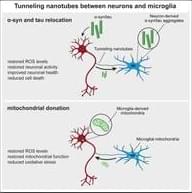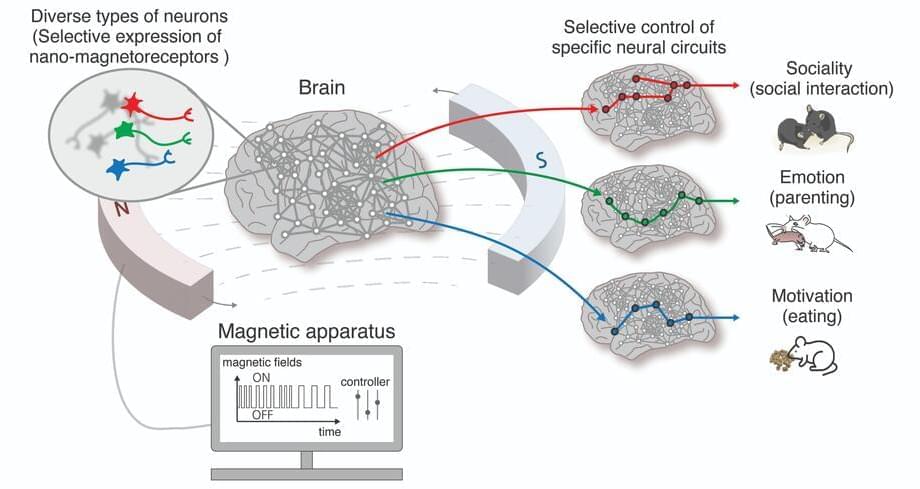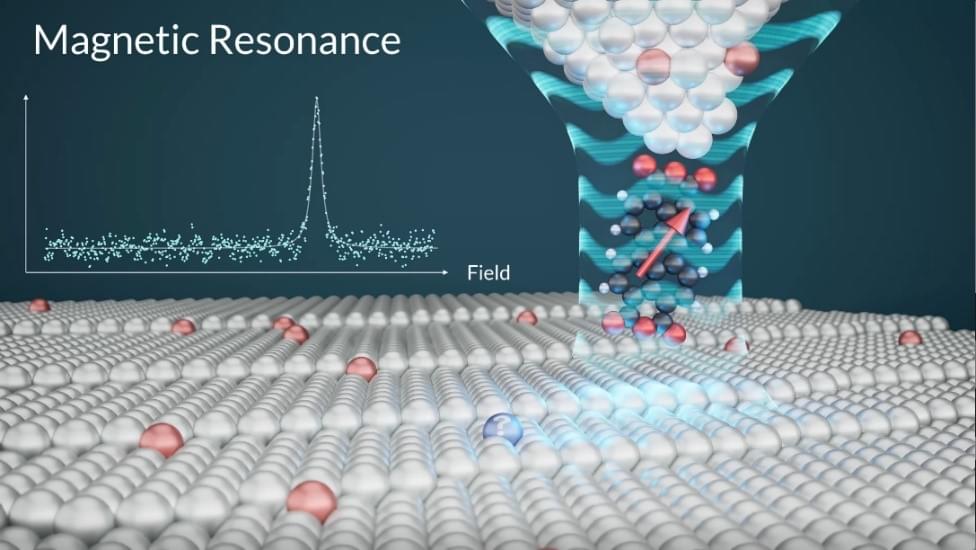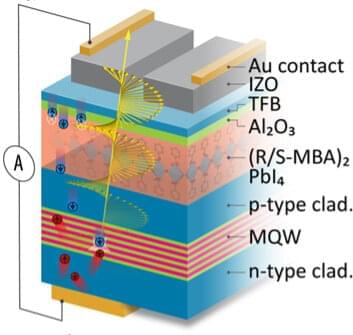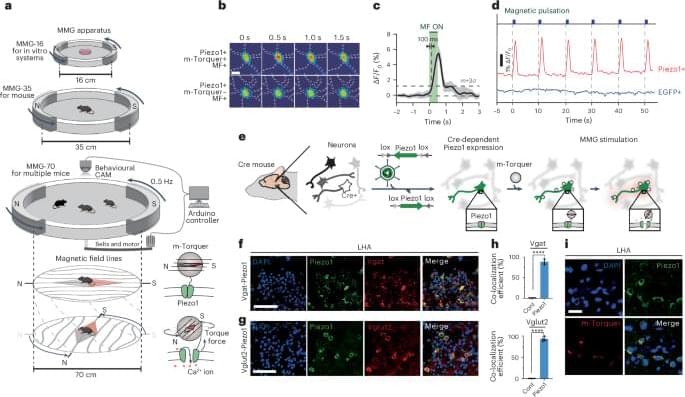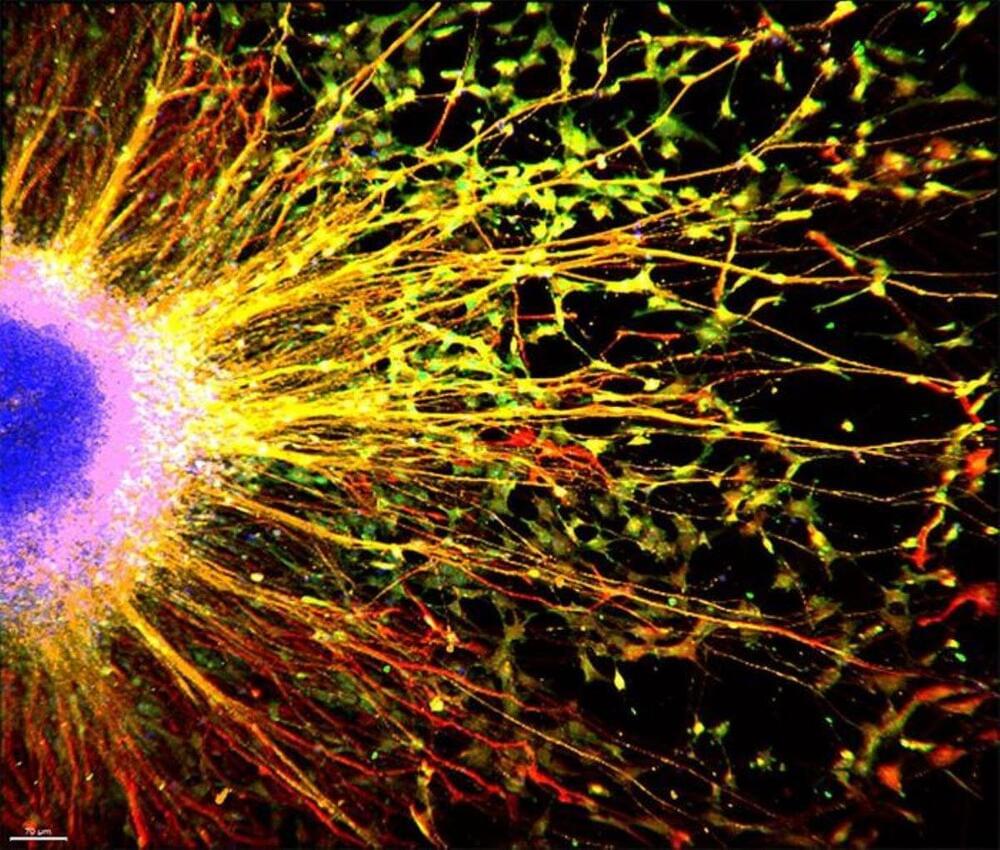Jul 26, 2024
Microglia rescue neurons from aggregate-induced neuronal dysfunction and death through tunneling nanotubes
Posted by Cecile G. Tamura in categories: biotech/medical, health, nanotechnology, neuroscience
In a recent study published in Neuron, researchers discovered that microglia, the brain’s immune cells, use tunneling nanotubes…
Scheiblich et al. uncover a novel mechanism by which microglia use tunneling nanotubes to connect with α-syn-or tau-burdened neurons, enabling transfer of these proteins to microglia for clearance. Microglia donate mitochondria to restore neuronal health, shedding light on new therapeutic strategies for neurodegenerative diseases.
